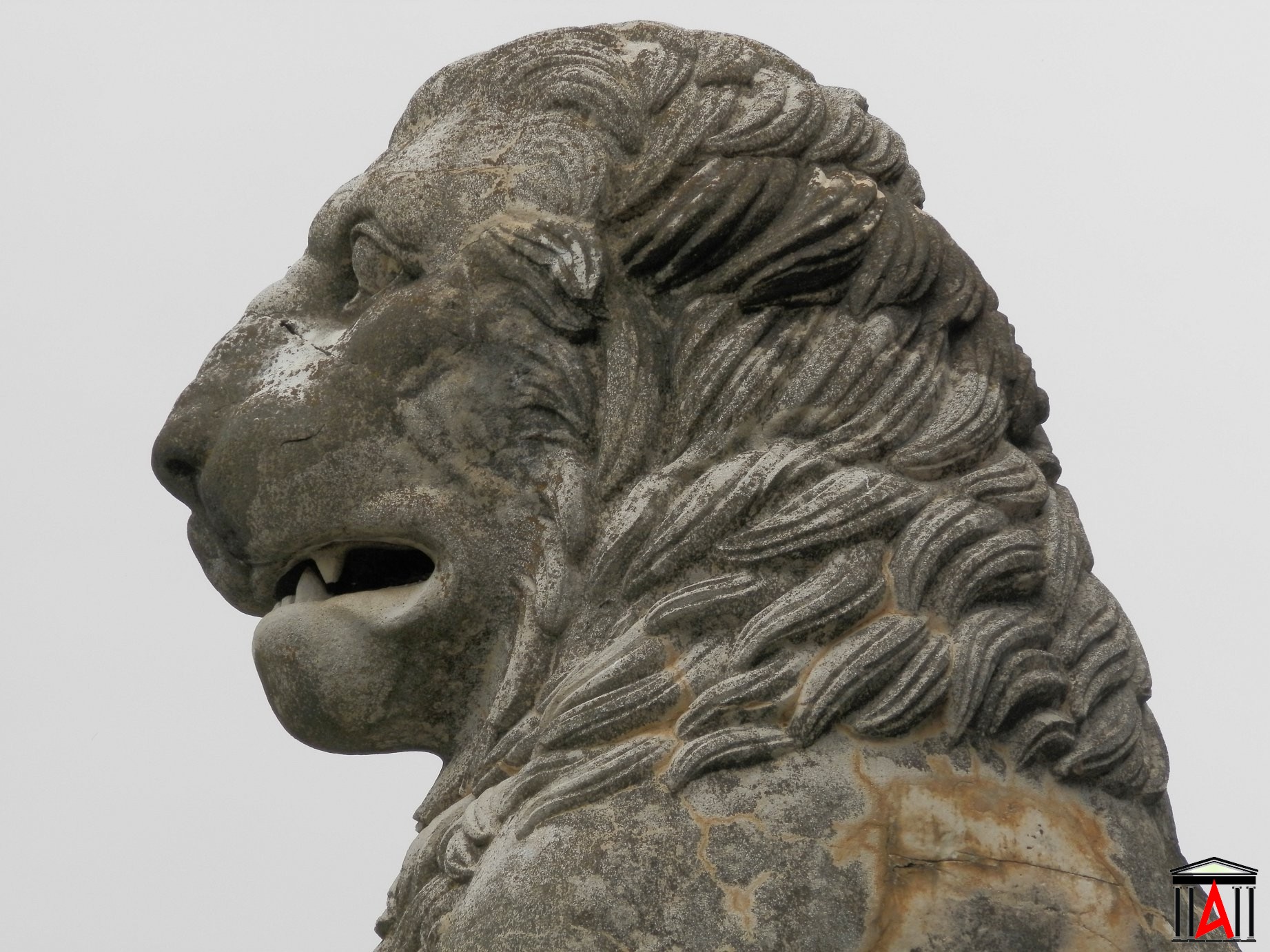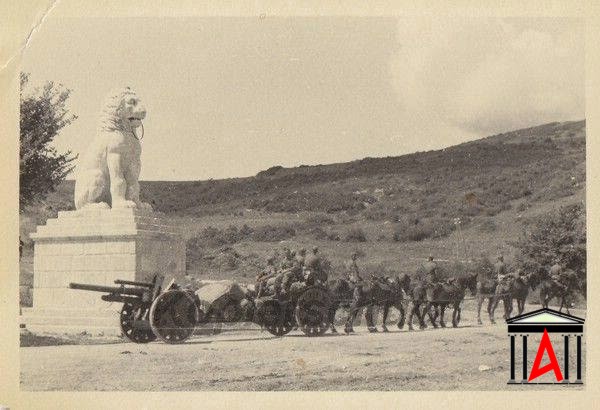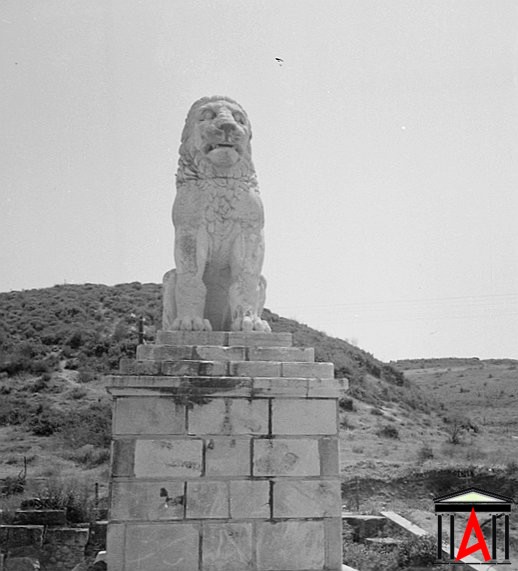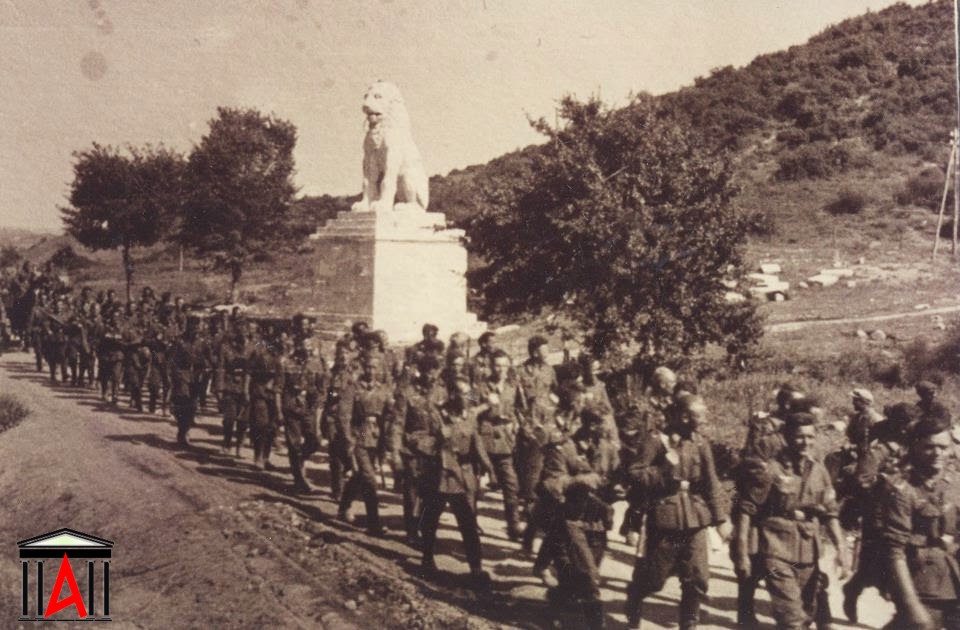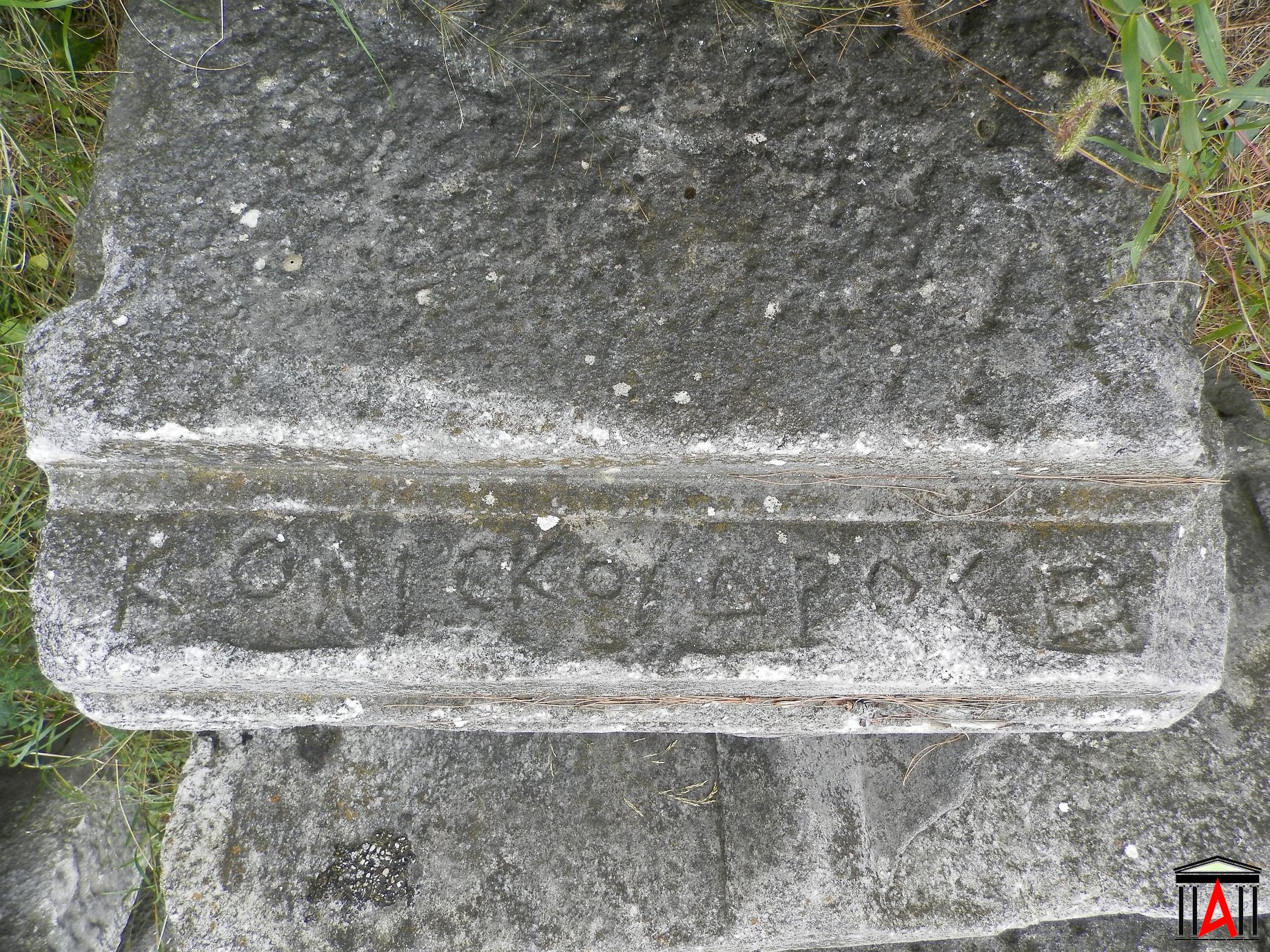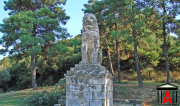THE MONUMENT OF LEONTOS
"He said, Leo, fthimenoio whose grave amfivevikas, voufage; THE Tash your not worthy Virtues; - Son Thefdoroio Teleutias, Osh mega everything ferteros HN, Theron osson I kekrimai. BUT NOT Matan estaka, NOT bring what symbol Alka unhallowed· HN gar public dysmeneessi lion. "
- Funeral monument of the 4th century. e.g.. erected in honor of Admiral Laomedon from Lesbos who as a devoted companion of Alexander the Great, Trierarch and served as commander of the prisoners initially and satrap of Syria later. The monument was restored in pedestal in the position where it was found, on the west bank of the river Strymon, near the old bridge.
The history of the revelation of the monument dates back to the War 1912-1913 where Greek soldiers digging, were the foundations of the base and a few pieces of the body of a lion. The first archaeologists involved in the excavation and study of the monument were professors C.. Economou and a. Orlandos, whose work was interrupted because of the war. Later, the 1916, the First World War, British soldiers camped in the area, were parts of the body of a lion and later, during the installation work of the river from the company MONKS-ULEN (1930-1931), came to light new segments of the monument. Systematic research and study of the monument began in 1932 by French and American archaeologists and technicians, who after multilateral efforts and financial bids Americans, French and Greeks resulted in the restoration of the monument by the sculptor of the National Archaeological Museum, Andrew Panagiotaki.
According to J. Roger και O. Broneer the original building, built of limestone, consisted of a square base, dimensions 9,99 x 9,99 m., surrounded by a colonnade of Doric semi-columns, four on each side, which supported Doric entablature. Above the entablature based tiered pyramid and the pyramid that basis stood the huge lion. With this data, the Broneer with its representation, gives the monument in the form of the mausoleum, as the corresponding funerary buildings in Asia Minor and believes that it is a monument of virtue that war erected to honor a valued citizen of Amphipolis. The monument dates from the Broneer the last quarter of the 4th century. e.g..
The Lion Monument is not only a work of art imposed by the size and strength. Apart from the performance of the anatomical details (veins, rich mane, possible tip, pulled sideways mouth, eyes positioned deep inside the niches) that increase the accuracy performance of the subject by the artist, impressive symbolism of plastic this work refers to the martial virtue and courage Laomedonta.
From Wikipedia, the free encyclopedia
- The Lion of Amphipolis is work Epitaph plastic 4th century before the common chronology, martial glory monument and practice. According to Professor Dimitris Lazaridis, erected in honor of Laomedon from Lesbos, one of the most remarkable Trierarch Alexander the Great who settled in Amphipolis, and likely topped the tomb of Amphipolis
Historical discovery. The discovery of the monument is connected with the younger military history of Macedonia, as the identification of the first portions due to Greek soldiers, camped there during the Second Balkan War, and some years later 1916 the discovery of further parts of British soldiers during the construction of fortifications during the First World War. Subsequent, in carrying out drainage works Struma the company Monx-Gioulen the 30s, discovered the mouth of the ancient bridge and ruins found in the mud of the river huge pieces of marble lion. Nevertheless, the 1937, example of the initiative of the US ambassador in Athens Lincoln MakVi, private initiative and additional aid to the Greek State, restored the Lion of Amphipolis. -
Indicative of the symbolic importance of the lions as signals in tombs is the following inscription written in the 2nd century. a.d. by Antipater of Sidon (epigrammatist) for someone Last of Thefdorou, who, of course, does not appear to be related to Amphipolis or there lion:
- "He said, Leo, fthimenoio whose grave amfivevikas, voufage; THE Tash your not worthy Virtues; - Son Thefdoroio Teleutias, Osh mega everything ferteros HN, Theron osson I kekrimai. BUT NOT Matan estaka, NOT bring what symbol Alka unhallowed· HN gar public dysmeneessi lion. "
- The whole process of excavation and findings have been recorded in detail by Oscar Broner in his book 'The Lion of Amphipolis’ which the ekdothike 1941 in English.
Description
The Lion of Amphipolis, while seated, greater the share of Chaeronea· has a height of more than four meters and alongside the piers exceed eight meters. Only the head has a length of two meters. The style of certifying, by experts, it is for the fifth or first half of the fourth BC. century. In the time of erection of, there is no consensus among experts since none of the ancient writers did not mention anything about this monument.
According to recent archaeological findings, speculated that the lion was on the top of the tomb of Amphipolis. Modern web folklore want Leo to have no language, not to reveal who owns the grave, keeping the secret, or the creator of the lion throws him overboard disappointed, after finding that he forgot to build language.
…















